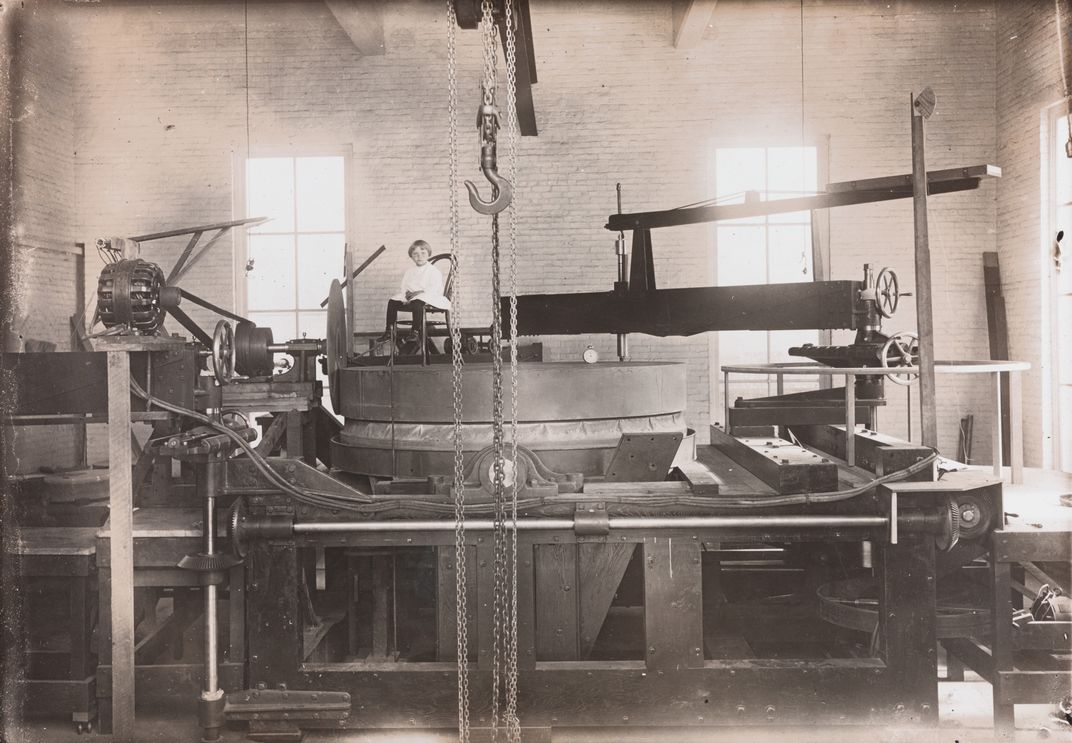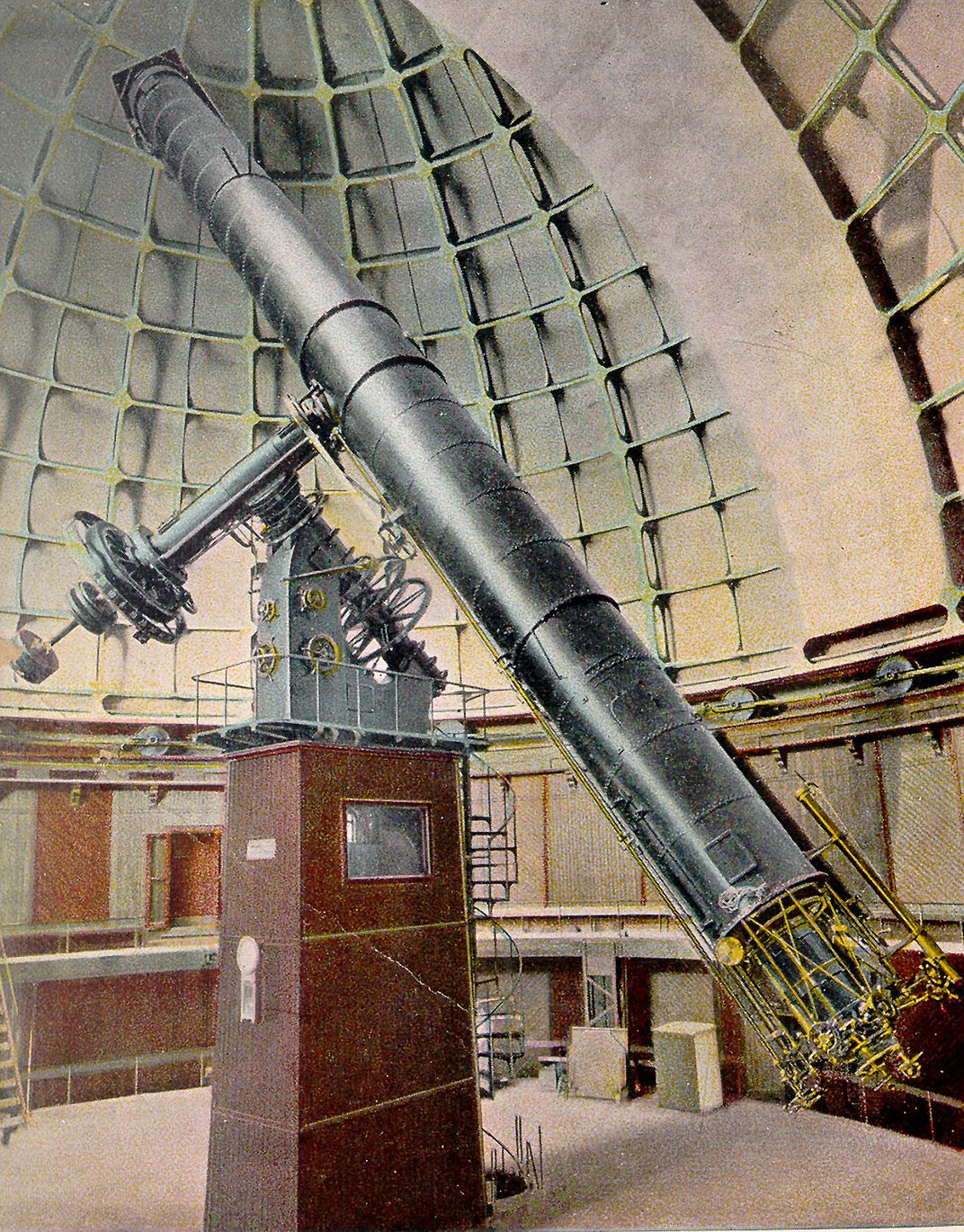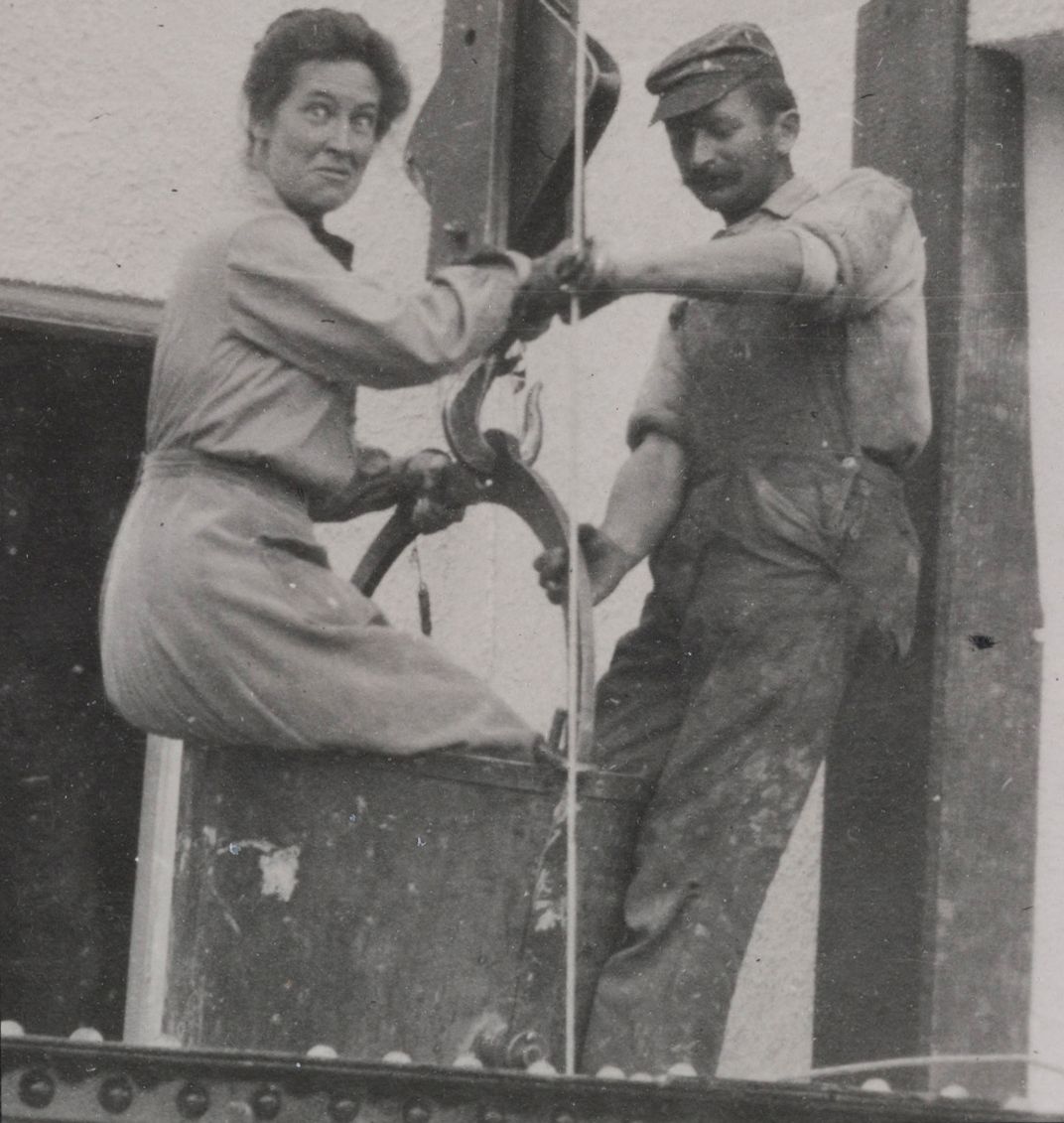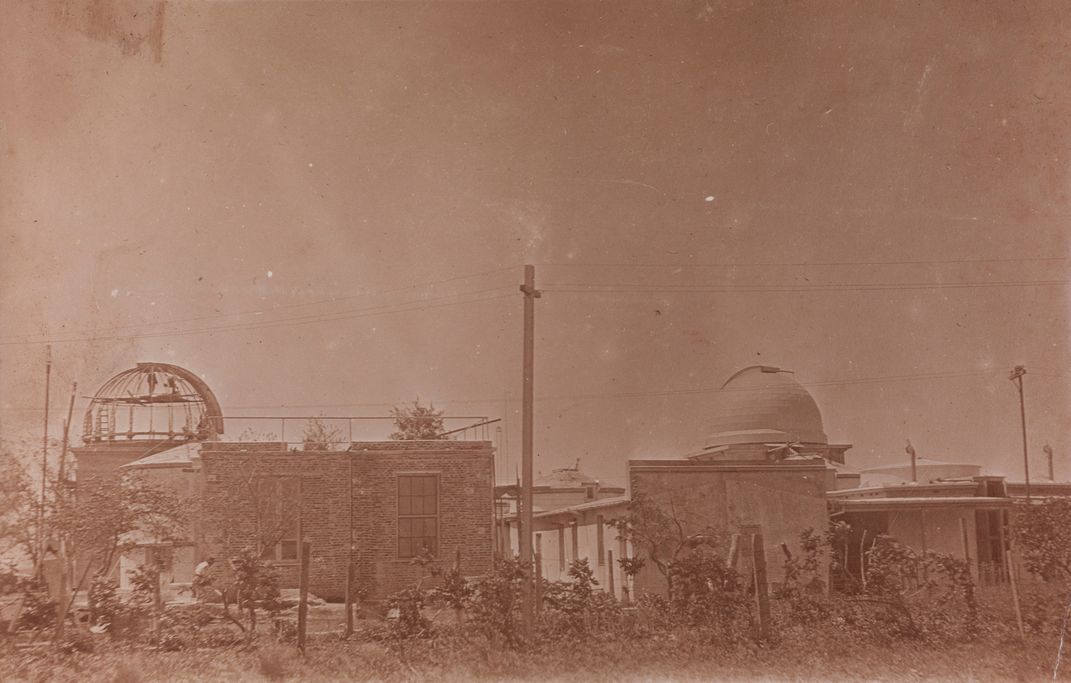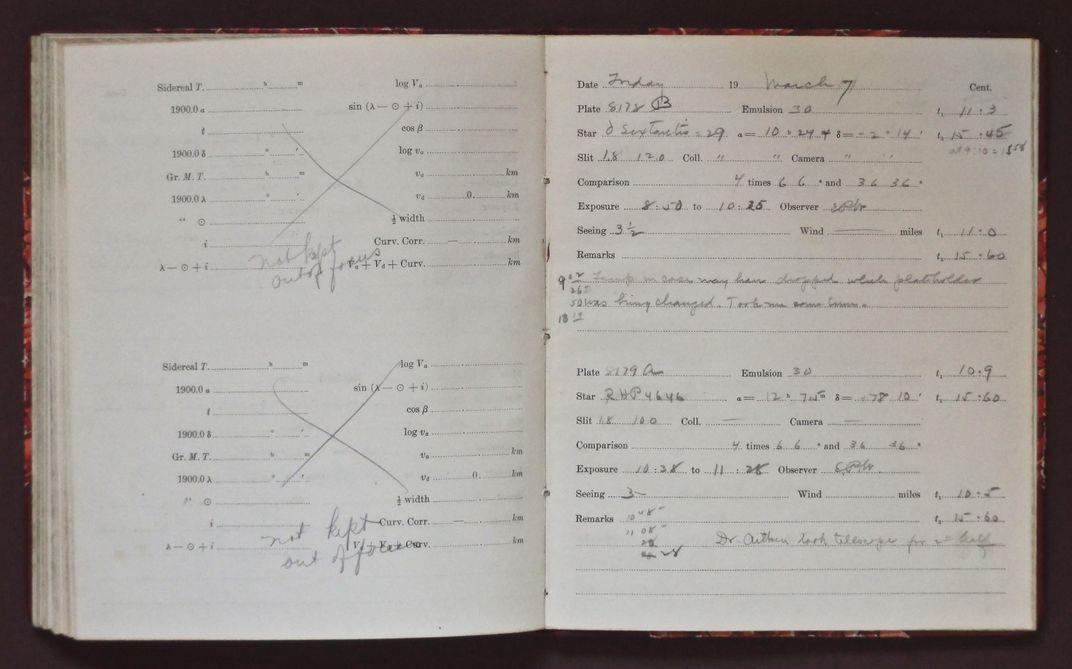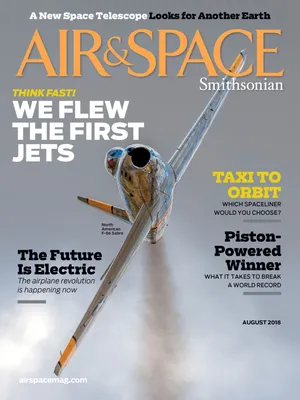More Than a Century Ago, Astronomer Phoebe Waterman Defied Her Doubters
Told she couldn’t succeed in science, one woman proved there are many ways to leave a legacy.
/https://tf-cmsv2-smithsonianmag-media.s3.amazonaws.com/filer/83/af/83af77b5-596a-44b9-85ad-e08ee29ed622/09d_aug2018_nasm-9a12028-015e_live-wr.jpg)
She kept her telescope in a wooden box in the basement. Phoebe Waterman Haas had observed hundreds of stars with it over the years, plotting light curves as their brightness flickered. Her grandson, Thomas Haas, saw the refractor nestled away just once, when he helped her retrieve it one night in 1966. He was 11 years old. “I remember it like it was yesterday,” says Tom. “We stayed one evening after dinner. My brothers and sister were there and she brought out this beautiful brass telescope. She put it in the back yard and showed us the stars and the moon.” Waterman Haas died the next year, and it was only decades after, when Tom began to research his grandmother’s life, that he discovered she knew just a little bit more about stars than the names of the few she taught him that night.
Phoebe Waterman Haas was among the first American women to earn a Ph.D. in astronomy. Her doctoral thesis confirmed the usefulness of classifying stars by their spectra, or colors, and upon graduation from the University of California at Berkeley in 1913, she was hoping to embark on a career as an astronomer. But later that year, she was forced to make a choice.
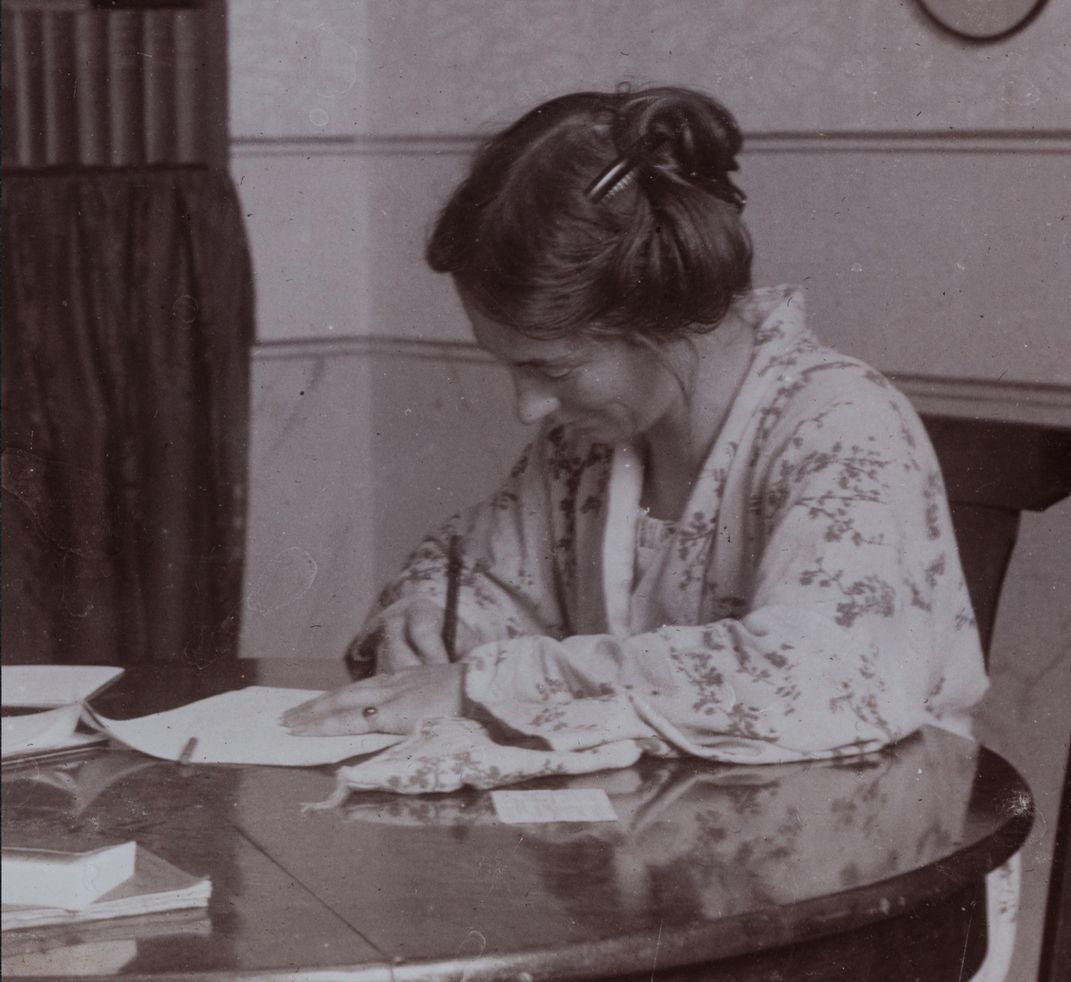
Phoebe Waterman was born in 1882 into a family that valued learning. Her father, John Charles Waterman, was a colonel in the U.S. Army’s 7th Cavalry Regiment, fighting in the battles of Little Bighorn (also known as Custer’s Last Stand) and at Wounded Knee. He also had a great interest in science, keeping books and field journals about the plants he encountered on his travels, and instilled a love of education and adventure in his children. Phoebe was first home-schooled, and then sent to her father’s family in Michigan to complete her high school education. In May 1900, she began the new century visiting her father while he was stationed in Cuba, where she observed a partial solar eclipse. She recorded the experience in her diary: “For about four minutes this a.m. the clouds before the sun broke enough that we could make out the eclipse.”
Waterman left Cuba that fall to attend Vassar College. The school, still women-only, had opened its astronomy department in 1865, employing the country’s first female professional astronomer, Maria Mitchell, as a professor and director of the observatory. Waterman earned an undergraduate degree in astronomy and stayed on to complete a master’s degree in 1906. Caroline Furness, a professor who would become a close friend, encouraged and collaborated with Waterman to get her master’s thesis, “The Definitive Orbit of Comet 1880,” published in the German astronomical journal Astronomische Nachrichten in 1908.
After returning to Vassar for a semester as a substitute teacher, Waterman moved across the country to join the computing staff at the Mount Wilson Solar Observatory, near Pasadena, California. In letters to Furness, Waterman described hiking trips up Mount Wilson, a visit from Andrew Carnegie, and Valentine’s Day parties—an active lifestyle that suited her. The work that Waterman was assigned, however, was disappointing. She told Furness that she had hoped the data crunching she was doing—performing mathematical calculations and classifying photographic plates for use by male astronomers—would evolve into an independent project, but that was not happening. Her supervisor, Frederick Seares, “likes to superintend the very details, and gives anyone working under him practically no chance for original work,” she wrote. Waterman was getting a small taste of independent inquiry when she worked with astronomer Walter Adams, who often engaged her in discussions on solar rotation and let her pursue some of her own ideas with his data. During those times, she wrote, she “could do it all…. I feel as if I know one piece of the work thoroughly.”
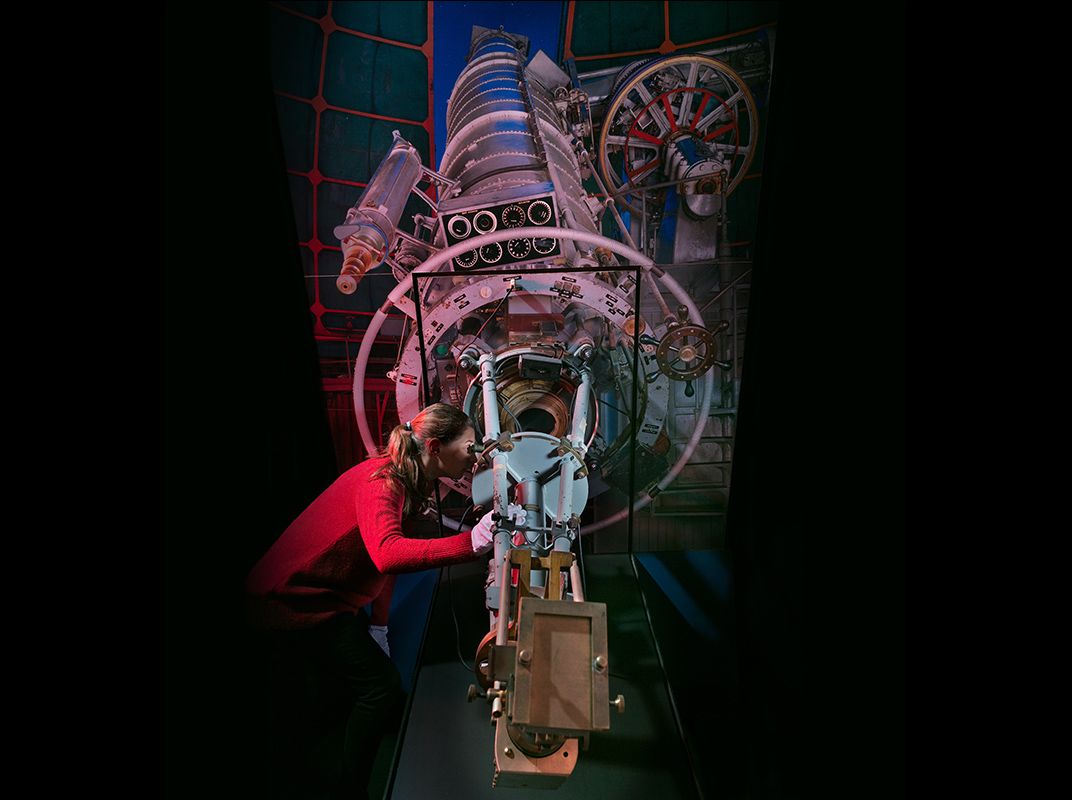
Outside of teaching and computing—Waterman had already tried both—there were very few positions for women in astronomy at the turn of the century. “But oh, I do want so much a position as astronomer, part of my work with the instruments and part with the reduction of my plates, as the men here have; I never did want the teaching,” she told Furness. Although male professors were generally encouraged to pursue independent studies, women were discouraged from devoting time to research over teaching. Without the ability to publish, a woman could rarely move beyond her academic position, or be accepted into the research-oriented U.S. astronomical community.
In 1910, Waterman’s boss at the observatory, Mount Wilson director George Ellery Hale, hosted a meeting of the Solar Union, a group he formed to bring physicists and astronomers from all over the world together to organize their research. Waterman was excited to hear about all the science the astronomers were pursuing. She wanted to be part of the next meeting, scheduled for 1913 in Bonn, Germany, and understood that “this means much more physics than I now have, instruction in stellar spectrography, and practical, firsthand knowledge of the spectrograph.” She was ready for the next step in her career: “I want to go on now to my Ph.D., and independent work, for I feel that I have gotten from the work here all that it [has] for me.”
Waterman applied to the doctorate program at Berkeley because at the time tuition was free. Not only was she accepted, but her undergraduate and master’s work was so strong that the school awarded her credit toward her Ph.D. in astronomy and mathematics.
When she told the staff at Mount Wilson of her plans, it elicited some surprise: “It is very bold and presuming of a woman to think of such a position I suppose!!” she wrote to Furness in May 1911. “They think so here [at the observatory].” On the other hand, her new colleagues at Berkeley seemed to place as much faith in Waterman as she did in herself. William Wallace Campbell, the director of the Lick Observatory atop Mount Hamilton, south of Berkeley and also operated by the University of California, wrote to Waterman that she seemed well prepared to pursue her doctorate and he would be “very glad to afford all necessary opportunities in the Lick Observatory for practical work in astronomical spectroscopy.” Waterman wrote gleefully to Furness about going back to school and being allowed to participate in advancing the field of astronomy: “Hurrah for a little share, just a little one, in the big work you are all busy in!”
When she got to Berkeley, Waterman threw herself into research and classes. She didn’t experience the gender divisions that she had at Mount Wilson, explaining that “they give a woman just the same work…as the men, and judge them on the same basis. I am getting used to the different standard a little—for it surely is a different one, and quite a different thing from measuring up against women.” Waterman’s professors thought, at the time, she was as capable as any man. Armin Otto Leuschner, who ran Berkeley’s astronomy program, described Waterman as “one of the most unusually well-equipped women we have ever had at Berkeley. She is brilliant, quick and accurate and disposes of her work with promptness and accuracy.”
Over the summer she did research at Lick Observatory for her dissertation. Campbell gave her access to the 36-inch refractor and its world-class spectrograph so she could study whether certain stars could be properly classified using the visible part of the spectrum. She based her work on the Harvard Classification System, then the leading system to catalog stars by their spectra. The classification was organized by astronomer Annie Jump Cannon, who worked with distinguished astronomer Edward Pickering, credited with winning international renown for the Harvard College Observatory. (Cannon, who cataloged over 350,000 stars during her career, was one of over 80 highly talented women, “human computers,” who worked with the glass plate observations taken by the male astronomers. Among them was Henrietta Leavitt, who discovered the period-luminosity relationship for stars called Cepheid variables, which could be used to measure distance across space. It was later used by astronomers like Edwin Hubble to calculate the size of the Milky Way, and even the expansion of the universe. The relationship was finally recognized as Leavitt’s Law in 2009. The story of the Harvard College Observatory computers was recently told by Dava Sobel in The Glass Universe.)
The first part of the classification system was published in 1901, and the astronomers at the 1910 Solar Union meeting—the one that galvanized Waterman to pursue her doctorate—had agreed to conditionally accept the classification system. Waterman’s research helped broaden its application, and was a taste of the one thing she really wanted: to make a real contribution to astronomy.
This work was also making Waterman a sought- after astronomer. Before she graduated from Berkeley, in 1913, she received offers for post-graduate work, but only one had Waterman’s desire for adventure written all over it. She had persuaded her roommate, Anna Estelle Glancy, to apply with her for positions at the Argentine National Observatory at Córdoba. Glancy wrote later about how it happened. “Phoebe said: ‘Let’s get jobs at the same observatory.’ I answered: ‘Who would want two women?’ ‘Maybe Dr. Perrine would take us,’ she said,” referring to a Charles Perrine, an astronomer from Lick Observatory who had become the director at Córdoba in 1909. “In a cooperative mood, I said: ‘Well, you can ask him.’ Lo and behold, he answered: ‘Come.’ ”
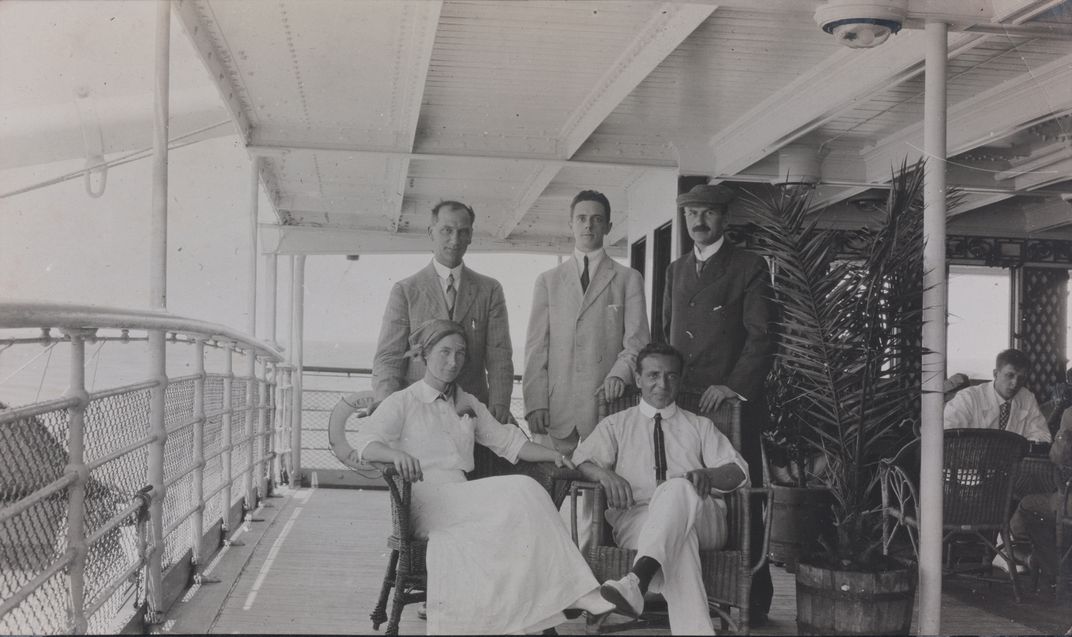
The job offered an exciting opportunity to travel and a salary of $100 a month. But it was much more than that, as Waterman wrote to Vassar professor Mary Watson Whitney: “It is the chance for research which I have been wanting so much; on the astrographic catalog at first, but as soon as they can get their reflector installed, I can have spectrographic work. And just think of the stars down there that have never been touched—I would give almost anything to get at them.” On September 6, 1913, Waterman and Glancy left from New York for Argentina.
Life in Córdoba, however, turned out to be a step backward from the freedom she had gotten used to at Berkeley. Women were not allowed to live on the observatory grounds with the male astronomers, so Waterman and Glancy lived in town, and were therefore initially unable to observe at night. “And that’s the best part of the whole job, to my mind,” Waterman wrote to her colleagues in California, understating the fairly extreme limitation on her ability to perform research. A couple of weeks later, Waterman explained the workaround they’d come up with, which was still difficult “because we have to go up early, before dark, and take chances on its being a clear night.” If the sky clouded over, they were stuck—disallowed from traveling at night, with nowhere to sleep on the grounds. Finally Waterman and Glancy requisitioned some cots for their offices at the observatory. Waterman wrote that it felt “good to get into flannel shirt and corduroy, and go up into the dome, to handle the telescope, and to be out with the stars once more!”
After a month of figuring out how to simply do the work she was hired to do, in the face of the observatory’s unwillingness to let women share the space properly, Waterman started to see the appeal of another route. On the steamship to Córdoba, Waterman had met a German entrepreneur named Otto Haas and they developed feelings for each other; they wrote letters to each other after parting ways. He had launched the U.S. branch of the chemical company Rohm and Haas, and was on his way to establish branches in South America. Waterman told Haas about her boredom and, as she’d experienced at Mount Wilson, her forced dependence on the work of her male colleagues: “We have finished all the interesting work on our star plates, until they get us some new observations; and now we are just marking time, doing stupid sums all day long. Nights are still fine, of course, but I guess now I am ready to leave it all, and come to you.” Waterman asked the observatory to offer her place to another woman, though by the time she left Córdoba two months later and married Haas in Des Moines, Iowa, they hadn’t filled it.
Even if Waterman had decided to dig in at Córdoba, she likely wouldn’t have been allowed to stay upon deciding to marry. Being a wife was considered an occupation, one that conflicted with any work away from home. One revealing exchange about the culture at the time was between Edwin Frost, the head of the University of Chicago’s Yerkes Observatory, and Lick director Campbell. While at Berkeley, Waterman had applied for a computer position at Yerkes, before deciding on Córdoba. A year later, after she came back to the States and married, she asked Frost about her application. Frost wrote to Campbell asking about Waterman Haas’ qualifications and explained that, though he preferred a man who could participate in observing, he would take a woman. Campbell replied with a glowing recommendation of her skills, describing Waterman Haas as “bright, industrious, and endowed with some elements of originality.” But, he added, she “recently changed her occupation” and would no longer be suitable for the position.
(Glancy, the astronomer Waterman Haas left behind in Córdoba, never married, and went on to have a long career in astronomy and optics design.)
Waterman Haas’ decision frustrated her female colleagues at Vassar, who wished she had fought harder to both marry and work. Mary Watson Whitney wrote to Furness, “I am disappointed but not surprised to hear of Phoebe’s defection…. Why should marriage break all earlier engagements?”
At Lick Observatory, instead of discussing their contribution to the societal pressure that forced women, but not men, to choose between love and a career, her former colleagues used Waterman Haas’ decision as an excuse to double down on discrimination. When the Monks, a married couple, applied for fellowships at Lick in 1915, Campbell told Leuschner at Berkeley that his “sentiments concerning Mrs. Monk’s desires are…not so favorable” because “Phoebe Waterman’s astronomical career lasted about three months after she secured the doctor’s degree as a result of your efforts and the opportunities provided here.”
Waterman Haas, however, didn’t see her marriage as the end of her scientific pursuits. She continued to stay connected to people in the field—and they stayed connected to her, whether they admitted it or not. In March 1914, she requested copies of her doctoral thesis from Lick Observatory. The secretary included a handwritten note: “Your [dissertation] is being used very frequently in the assembly room.” Several years later, she noticed a mistake in it, based on observations made by her colleagues. In 1920, she wrote Campbell, explaining that the field of view in some plates had overlapped. She included a manuscript that explained the problem and the calculations she used to measure the spectrum of the star Deneb. Campbell published a corrective note in the Lick Observatory Bulletin, but he did not include Waterman Haas’ name.
Because of her expertise in spectroscopy, Waterman Haas had long been fascinated by variable stars—those that change in brightness over time, and can be studied by plotting their light curves. The observations don’t require high-powered equipment, so it’s a popular area of study for amateur astronomers. The American Association of Variable Star Observers was created in 1911 to collect this data from amateurs and publish it for use by professionals. In 1928, Waterman Haas asked the association to send her a few variable stars to “watch and practice on,” describing the brass four-inch Clark telescope with “excellent” glass that she’d recently acquired through her contacts at Lick. She thrived with this outlet for observation and research, writing the association in 1941, “There is nothing I enjoy more than an evening out with my telescope and the thrill of finding a faint prick of light where last time I looked, I could see nothing—then seeing that point brighten. I’ll be at it again, yet!”
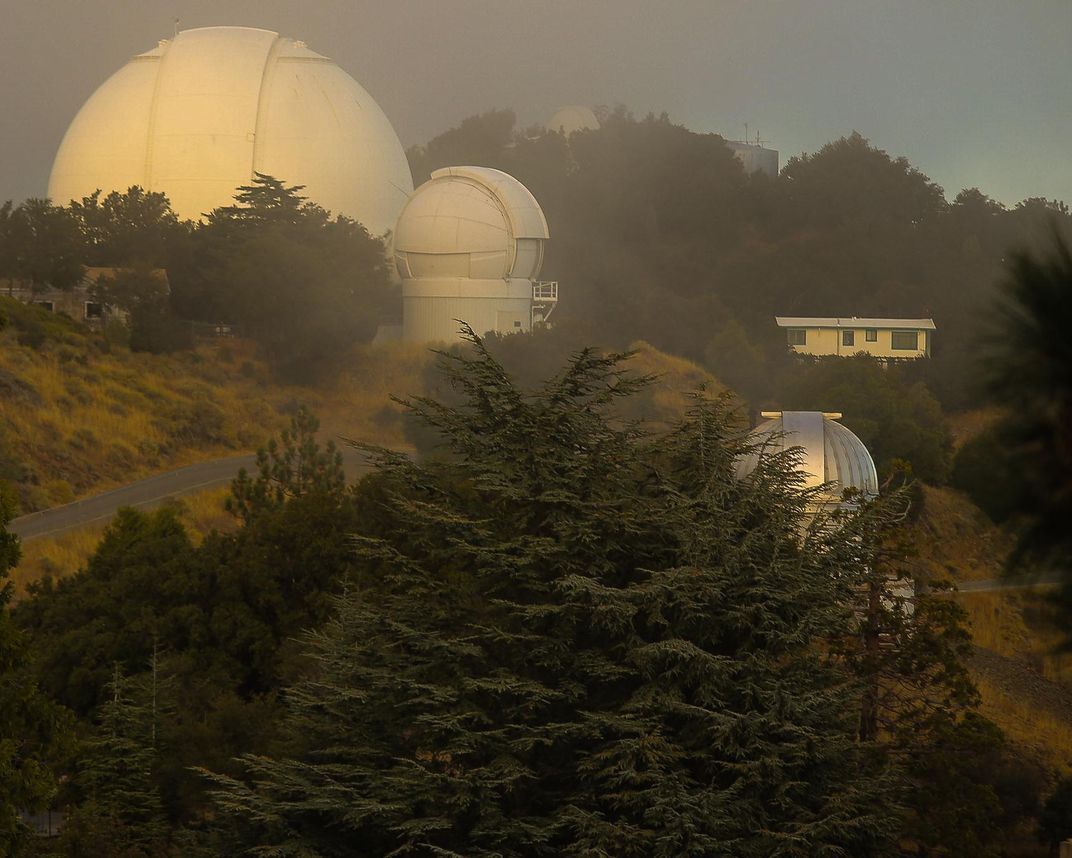
She was an active member of the association throughout the rest of her life. In 1945, her husband set up a charitable organization in her name, and the Phoebe Waterman Foundation became a crucial financial supporter of the group’s work. And Waterman Haas knew first-hand that the volunteer-driven astronomical association could be a refuge for women who couldn’t pursue work professionally. She spent much of her time recruiting them to compute the light curves from the vast amounts of data being submitted by observers.
Late in her life, Waterman Haas offered to donate her beloved Clark refractor to the association. Before the association was ready to collect it, she briefly got cold feet, and asked the members if they would postpone the pick-up so she could “get it out while my grandchildren are home for Christmas vacation…. I hope to give them their first look through a telescope.” The group postponed the sale, and Waterman Haas was able to spend one more evening with the two things she treasured most: her family, and a telescope that represented a career lost but a joy for discovery that she refused to let go.
Her dedication to astronomy—she also taught the subject at a girls school in Philadelphia almost to the end of her life—eventually impressed some of the people who thought that, while she was capable enough to be awarded a Ph.D., she could not have handled having a family while pursuing science. One of her former Berkeley professors wrote department head Leuschner in 1936, pointing out that Waterman Haas had never “left the field” of astronomy, but had continued observing and doing her own research, in whatever capacity she could: “She has carried her enthusiasms for, and knowledge of astronomy as a powerful cultural influence into her very charming family, and to her friends. In doing so it seems to me that she had fulfilled and is fulfilling the purposes of scientific education quite as effectively as though she were actively engaged in professional work.”
That’s a legacy that has proved influential far beyond her family and the students she taught. In 2013, Waterman Haas’ grandson used his own philanthropic endeavor, the Thomas W. Haas Foundation, to establish an endowment at the National Air and Space Museum in his grandmother’s name. The Phoebe Waterman Haas Public Observatory, at the National Mall location in Washington, D.C., honors her contributions to the field of astronomy and her role in advancing the position of women in science. Tom—who inherited his grandmother’s sense of adventure, becoming an aviator and flight instructor—wanted to share with others the feeling he had when he looked through her beautiful telescope at the stars. Phoebe Waterman Haas pursued her passions despite the constraints of her era, and now that love of the stars is being passed on to millions of Museum visitors each year who gaze up at the sky because of her.
